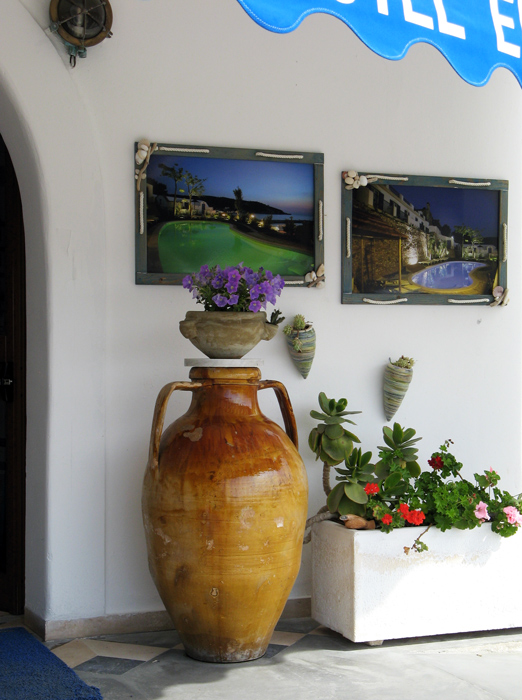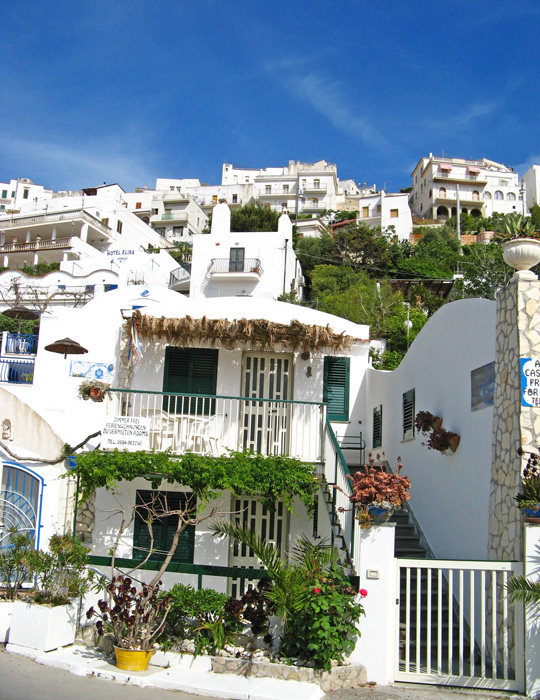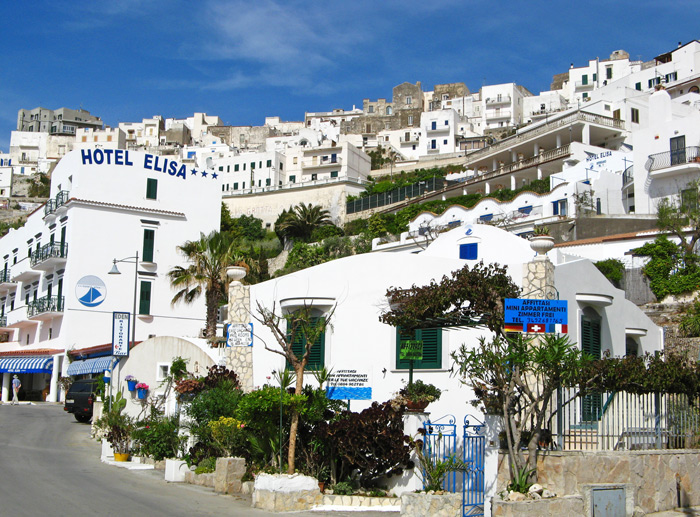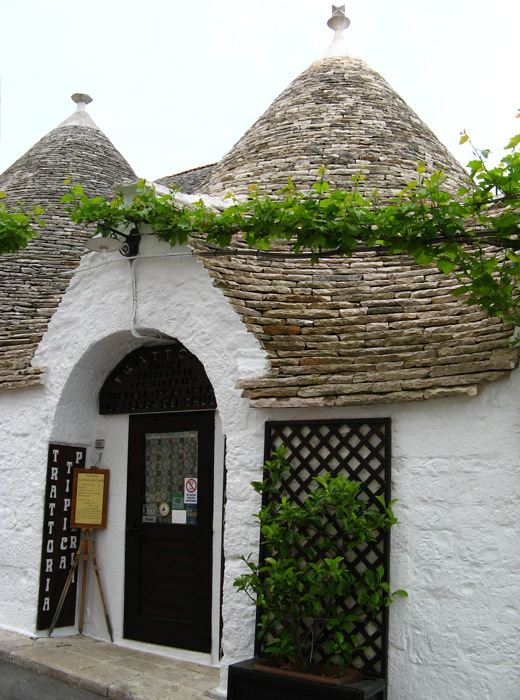
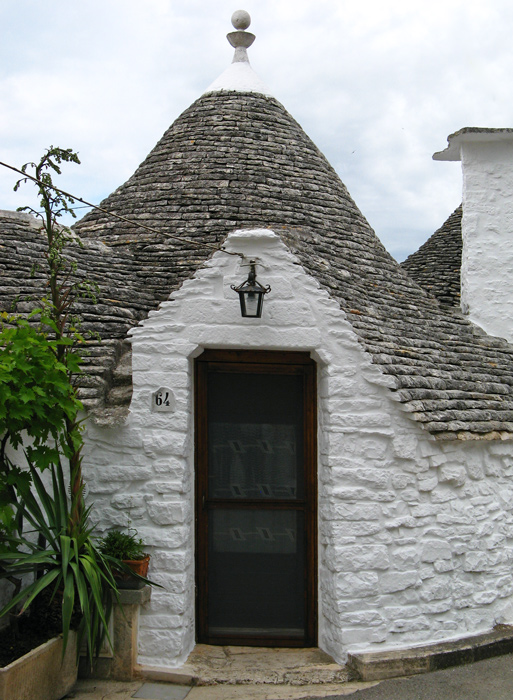
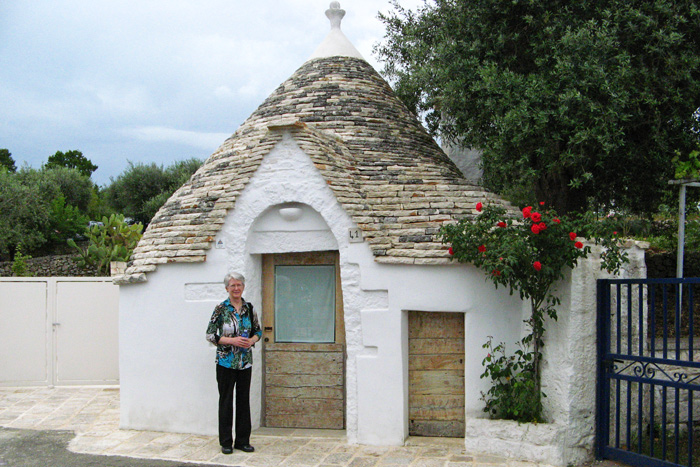
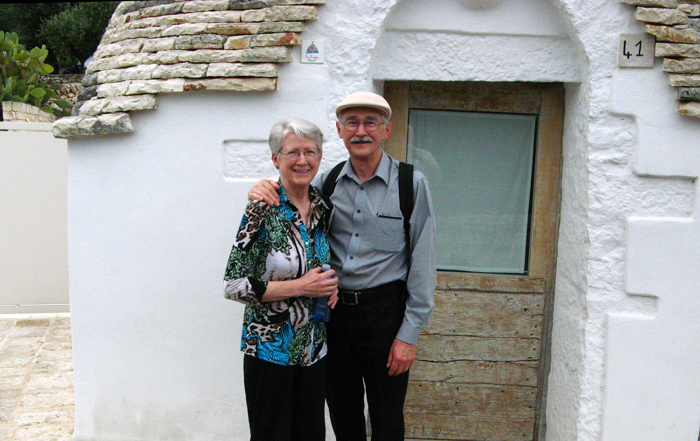
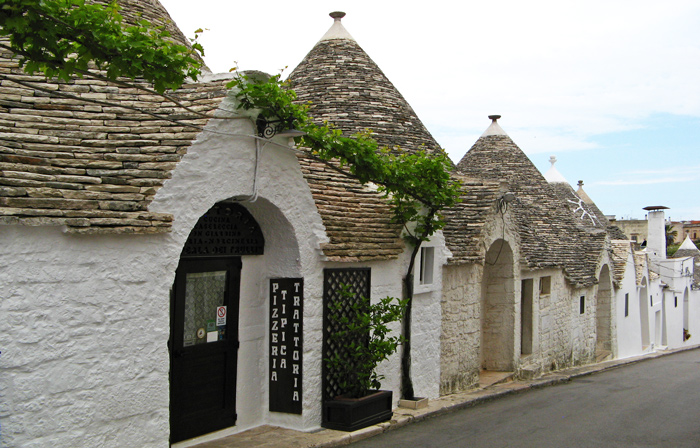
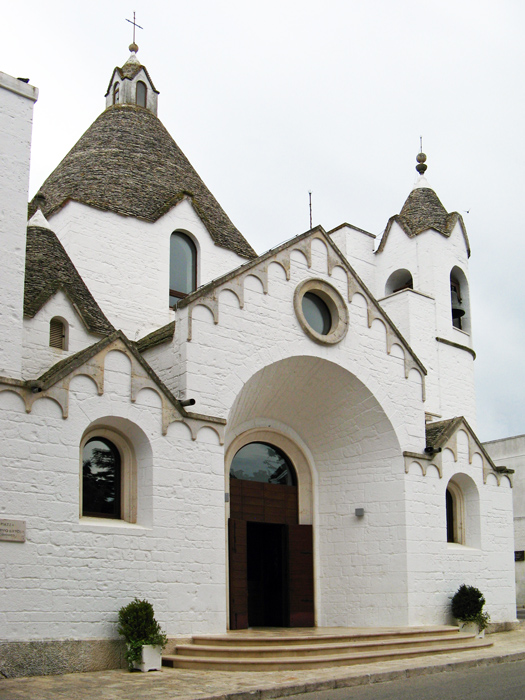
As you might guess, compared with houses of today, an unrestored trullo would have poor heating in the winter and little light. Not surprisingly, in the past, residents deserted trulli settlements in favor of modern housing, especially in rural areas. In the late 1990s, however, a local craftsman and entrepreneur named Guido Antionetta would inject new life and purpose into the sleepy ghost town of Alberobello.
Guido decided to buy a few dozen abandoned trulli and install up-to-date fixtures and furniture to be rented out as rustic holiday apartments. His venture, which he named “Trullidea,” would bring new interest and industry to Alberobello. Even more importantly, it would help preserve the last of the area’s unique trulli, a style of construction that had died out more than a century earlier.
Since then, a handful of entrepreneurs have purchased abandoned trulli and brought their hotel experience to the area. As unique places to stay overnight, trulli are now a draw for many on an Italian vacation.
Early on in this photo-journal, I noted that our guided tour did not include all worthwhile sights in Apulia. This Internet photo is proof:
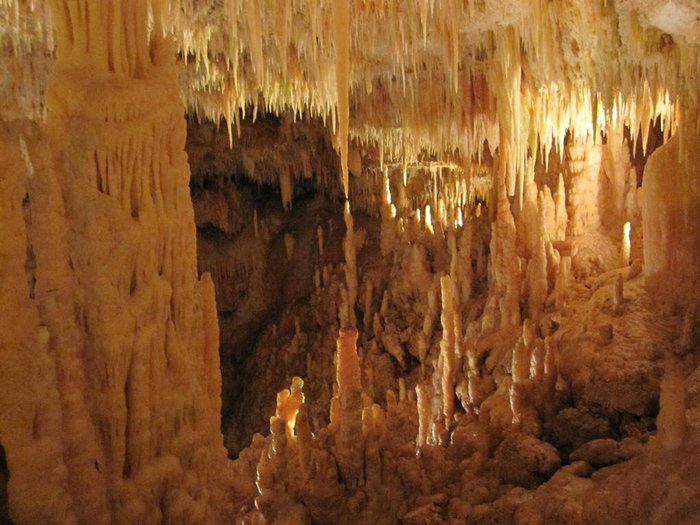
Trani
Trani doesn’t have many specific tourist sights; it’s the sort of place to wander about and admire harbor views. Its most eye-catching structure is its Cathedral, which appears rooted in an open piazza near the sea:
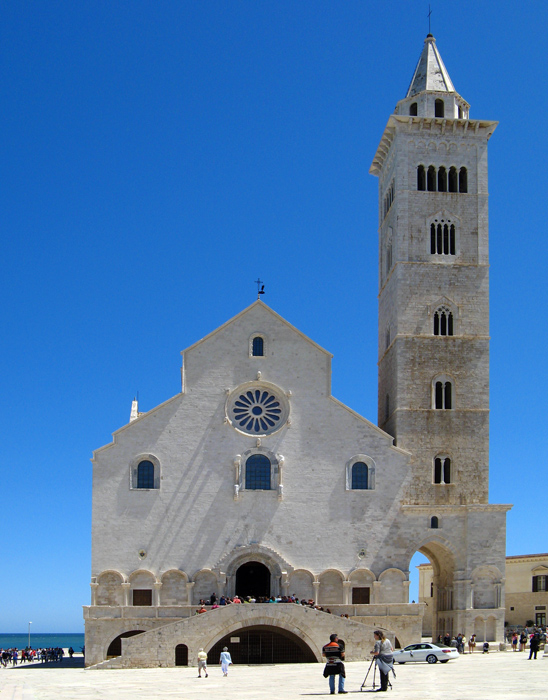
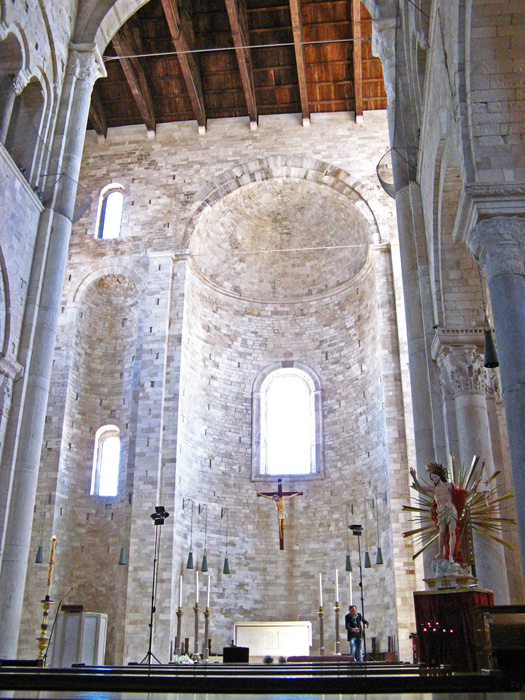
This town seemed reminiscent of 1950s films set in old-fashioned seaside Italy: historic buildings slowly fading with casual charm, boats bobbing in the harbor and life proceeding everywhere at an unhurried pace.
We spent most of our free time on a pleasant walk around the harbor, where there’s a lot to gaze upon:
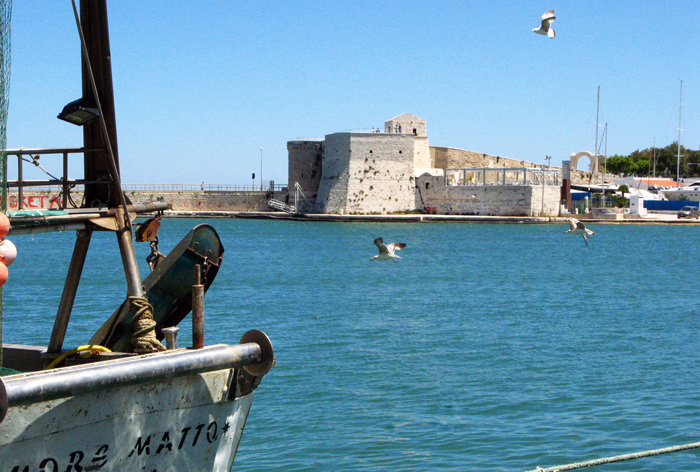
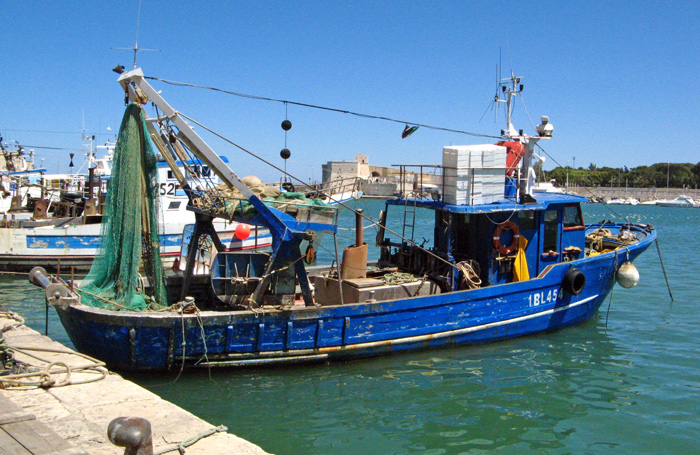
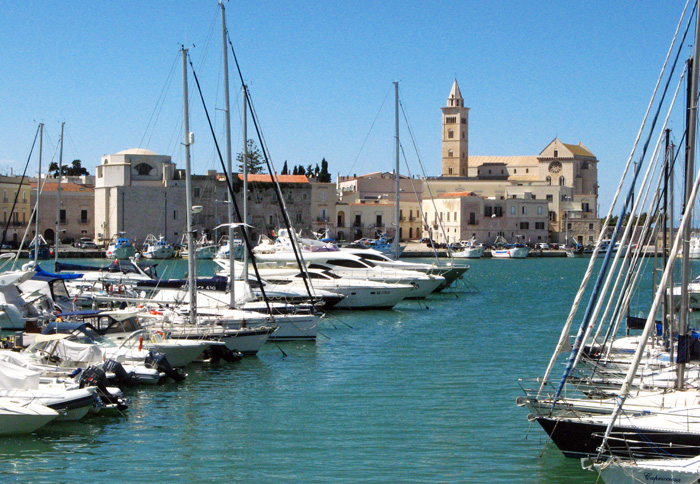
Returning the way we came, we couldn’t miss (another) Castello Svevo, just past the Cathedral, as it was there we were to meet our coach:
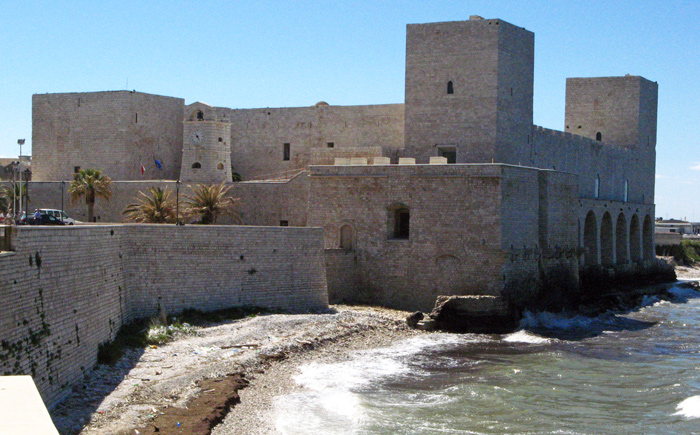
Castel del Monte
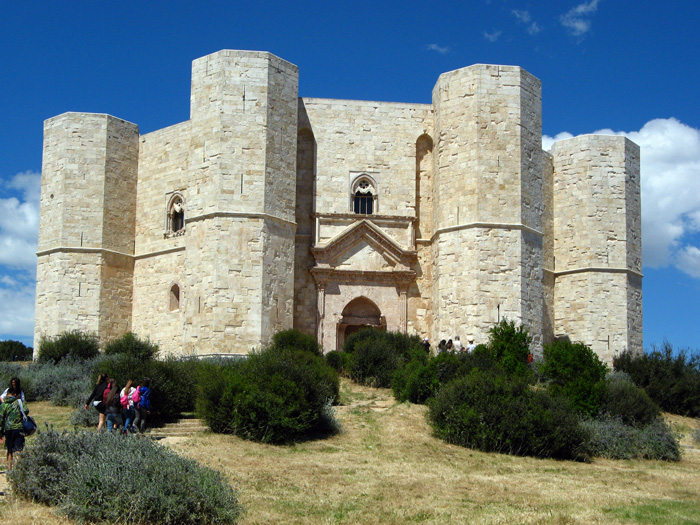
The exterior of Castel del Monte has been painstakingly restored. Unfortunately, the interior is rather bland. The marble walls and columns which once beautified the inside were either stripped by vandals long ago or repurposed in nearby constructions.
Built during the 1240s by Frederick II, the octagonal structure carries a touch of mystery. It has neither a moat nor a drawbridge and some contend it was never meant to serve as a defensive fortress. Apparently, it was never finished and there is no proof the emperor used it as a hunting lodge as commonly stated. After Frederick’s death, it was turned into a prison (his heirs were imprisoned here), used as a refuge during a plague, and finally fell into disrepair.
There is archaeological evidence that it once had a curtain wall as depicted in this artist’s rendering:
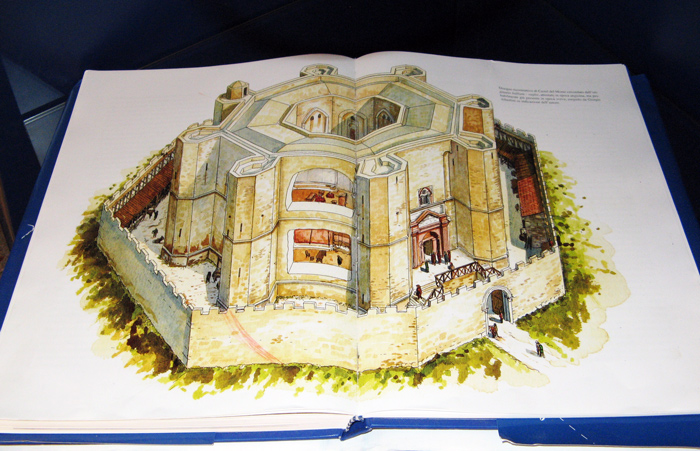
In 1876, in poor condition, it was purchased by the Italian State, which began the process of restoration in 1928. That is ongoing today. When we arrived, the front entrance was closed. For some reason, there were no signs to point to the visitors’ entrance on the opposite side.
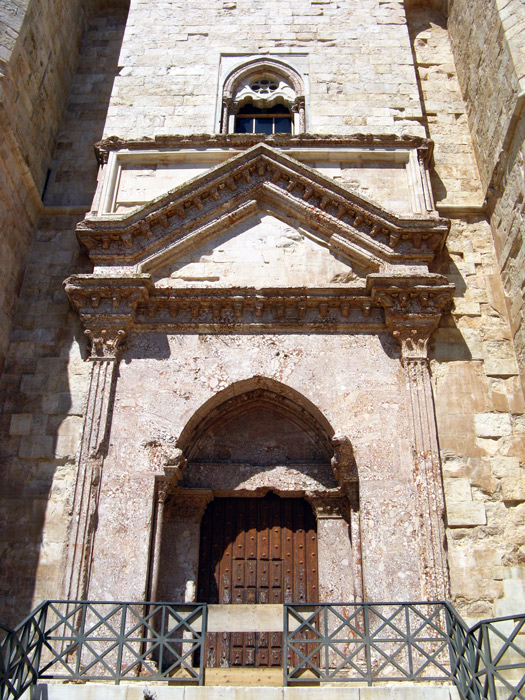
Peschici
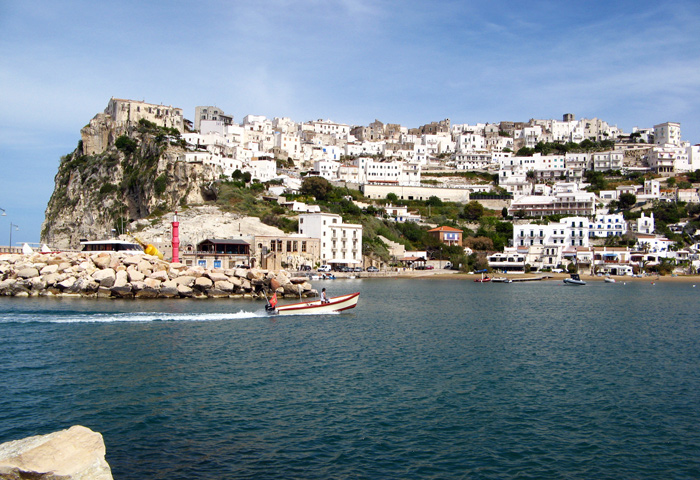
Much of the town clings to a rock spur facing the Adriatic:
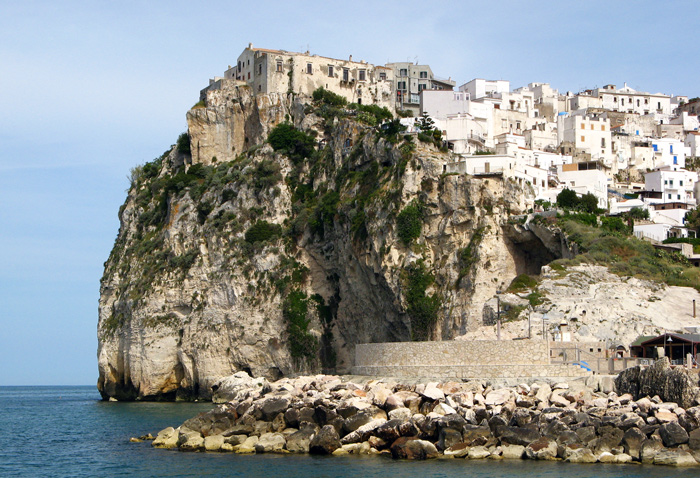
Peschichi is certainly off the beaten track, but the difficulty of reaching it makes it all the more appealing. The scenery is gorgeous and the old town center (said to be) adorable. With lots of traffic-free little streets to explore, we heard it is very easy to get lost there! Unfortunately, we had only a short time for wandering and only touched the periphery of this attractive town:
